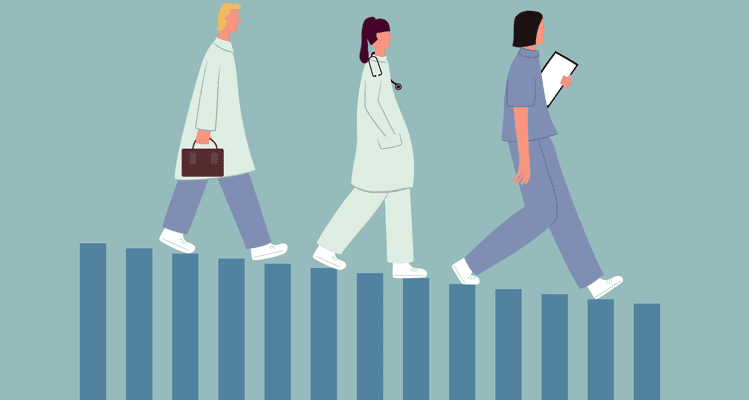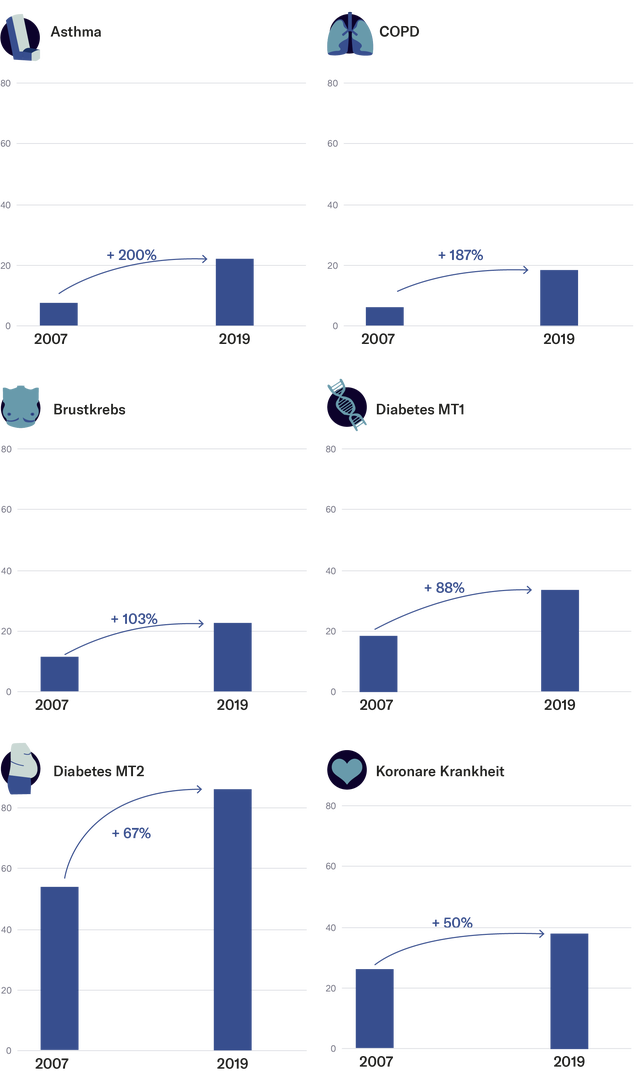Due to a lack of staff, hospitals in Germany are currently having to postpone treatments. There is a shortage of doctors everywhere. But demographic change is not the only reason for this.
The Berlin Charité is Europe’s largest university hospital and one of the most renowned hospitals in Germany. Around 2,700 doctors and over 5,000 nurses take care of thousands of patients there. Usually. Because in December, the hospital announced that it would have to go into emergency operation and postpone all non-essential treatments for the time being.
This is necessary because too many doctors and nurses are sick at the moment. Corona, the flu and other infectious diseases do not stop at the medical staff. In addition, parts of the staff in pediatric medicine have to help out to stop the rampant RSV wave, like the charity. The virus is particularly dangerous for small children and causes a rush to doctor’s offices and clinics.
The emergency operation in Germany’s largest hospital is reminiscent of the peak of the corona pandemic and once again reveals how quickly the German healthcare system runs into staff shortages. In addition to nursing staff, doctors are also missing everywhere. And this, although figures from the German Medical Association show that the density of doctors in Germany has been increasing for over sixty years. In 1960 there were still around 786 inhabitants for every working doctor, but at the end of last year there were only around 200 inhabitants.
Also compared to other OECD countries there are relatively many doctors in Germany. Only Spain, Norway and Austria have more physicians per capita. Nevertheless, the Federal Republic could in 2035 according to a Study by the Robert Bosch Foundation in addition to a number of specialists, there are 11,000 family doctors alone. According to this, rural areas in particular will suffer particularly from the shortage. It is already apparent that eastern German and more rural federal states have a lower density of doctors. The situation is different in the city states of Berlin, Bremen and Hamburg, which have the most doctors per capita in Germany.
The wave of pensioners meets part-time models
But even there, the supply gap will increase in the future. Because a large part of the medical profession in Germany will retire in the next decade. At the end of 2021, the average age in the profession was around 54 years. Just under 10 percent is under 40 years old.
The aging among doctors is thus in line with the general demographic change in society, which actually needs them particularly. Because with age – and with ever-improving diagnostics – the diseases increase, but not the number of doctors who can treat them.
This is particularly evident in diseases that are relatively widespread in the population. More and more people in Germany are being treated regularly for diseases such as diabetes, cancer or chronic lung diseases (COPD). But the number of these patients is increasing disproportionately faster than the number of doctors treating them. For example, if a doctor treated eight patients with asthma in 2007, in 2019 it was three times as many. The number of patients per doctor has also risen sharply for other common diseases.
However, the shortage of doctors is not only due to demographic change, but also to the fact that fewer and fewer doctors in Germany are working full-time. According to the Federal Statistical Office, 1.2 people are currently required to fill a full-time medical position. If current trends continue, even more doctors are likely to be needed for the same number of doctor’s hours in the future.
The Vice President of the German Medical Association, Ellen Lundershausen, recently explained why more and more doctors are striving for part-time work. at the German Doctors’ Day. She cited the growing workload with more patients and less time. A lower workload guarantees more regular working hours and a punctual end of the day. The increasing cost pressure is also a burden on the workforce.
Lundershausen also referred to the more than 60 percent of women who are currently completing a medical degree and who often do family work alongside their job. “The working conditions of the current health system are not made for women,” said the doctor.
Foreigners and places to study should come
But until these can be improved, the Federal Republic is dependent on doctors who can fill gaps in care immediately. German practices and clinics are therefore increasingly recruiting doctors from abroad. Doctors from the EU countries Romania, Greece, Austria and Poland in particular are following the call. However, the largest group of foreign doctors is represented by Syria. As part of the Skilled Immigration Act, which came into force in 2020, access to the German labor market should be easier for skilled workers from third countries in particular.
The top health politician in the country recently criticized the fact that Germany is poaching urgently needed specialists in other countries. Because the federal states are not prepared to pay for the additional costs of additional study places, it is better to get doctors from abroad, explained Health Minister Karl Lauterbach in the Interview with Markus Lanz. But Germany urgently needs 5,000 more medical study places per year. “I’ll approach the federal states, I’ve tried several times,” announced Lauterbach.
The federal states are currently solely responsible for financing medical training. More study places would cost them dearly. Because the training of the doctors costs on average around 200,000 euros and is therefore many times more expensive than a law or social science degree.
Nevertheless, the expansion of study places in federal states such as Bavaria or Lower Saxony has already been decided. Like North Rhine-Westphalia, Baden-Württemberg and other federal states, Bavaria also relies on the so-called “rural doctor quota” in order to increase the density of doctors in more rural areas. This envisages that high school graduates with poorer grades also have access to medical studies, provided they commit to practicing as a country doctor for a certain number of years after their studies.
However, it will be years before they finish their studies. Time when conditions for medical staff need to improve. At least that’s what the doctors at the Berlin Charité demanded when they took to the streets during a warning strike in early October demanding more appreciation, more wages and less overtime. The board gave in. Doctors’ salaries are set to rise and shift schedules are set to become more reliable. But that was before the wave of flu and RSV patients.

